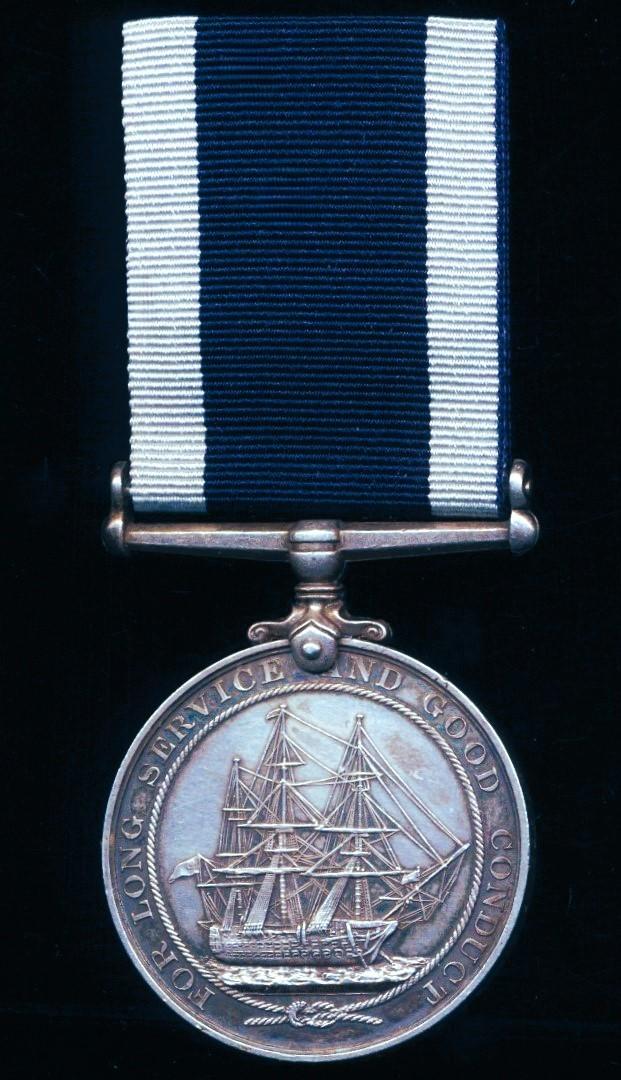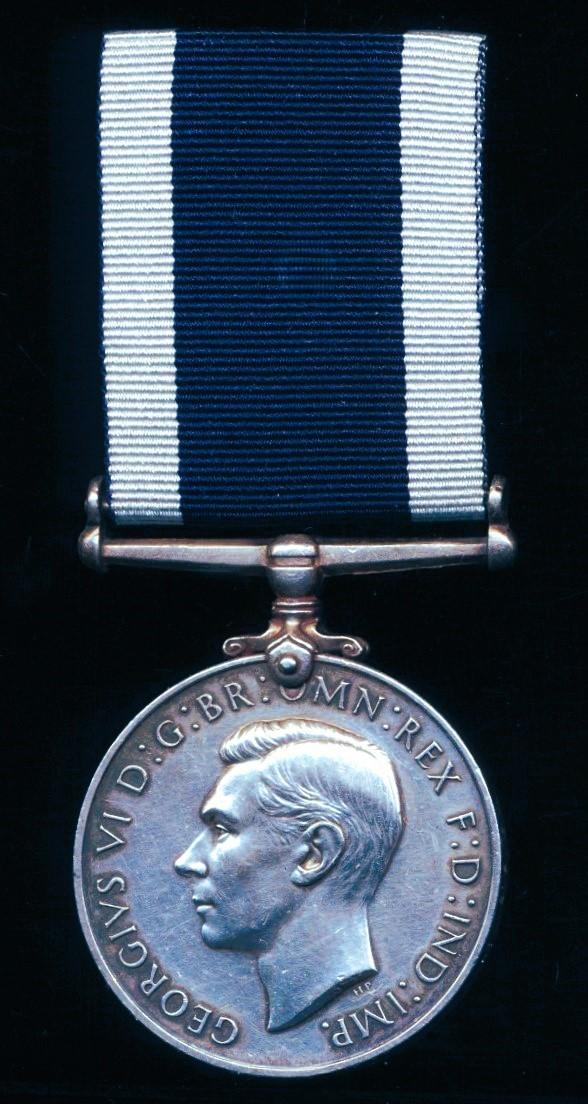Naval Long Service & Good Conduct Medal. GVI 1st issue (JX.139865. Q. S. Sessford. A.B. H.M.S. Royal Sovereign.)
Medal(s) verification: The Naval LSGC confirmed as entitled, per the respective Naval Long Service & Good Conduct medal roll reference ADM 171/145. The respective medal roll entry showing that the medal was issued to the recipient at H.M.S. Royal Sovereign on 9 December 1943, during the Second World War. His 'Service Sheet' also provides the detail 'Traced Medal 29-10-43. For his continuous service during the Second World War he would have been entitled to other medals including the War Medal after 28 days service
HMS Royal Sovereign: Was a Revenge-class (also known as Royal Sovereign and R-class) battleship of the Royal Navy displacing 29,970 long tons (30,451 t) and armed with eight 15-inch (381 mm) guns in four twin-gun turrets. She was laid down in January 1914 and launched in April 1915; she was completed in May 1916. She served with the Grand Fleet for the remainder of the Great War. In the early 1930s, she was assigned to the Mediterranean Fleet and based in Malta.
Unlike the Queen Elizabeth-class battleships, Royal Sovereign and her sisters were not modernised during the interwar period. Only minor alterations to her anti-aircraft battery were effected before the outbreak of World War II in September 1939. Assigned to the Home Fleet, the ship was tasked with convoy protection until May 1940, when she returned to the Mediterranean Fleet. Royal Sovereign was present during the Battle of Calabria in July 1940, but her slow speed prevented her from engaging the Italian battleships. By March 1942, she was assigned to the Eastern Fleet in the Indian Ocean, but after the Indian Ocean raid by Admiral Nagumo's Kido Butai, the ship was withdrawn to eastern Africa to escort convoys. In January 1944, she returned to Britain, and in May the Royal Navy transferred Royal Sovereign to the Soviet Navy, which renamed her Arkhangelsk. She then escorted Arctic convoys into Kola until the end of the war. The Soviets returned the ship in 1949, after which she was broken up for scrap
Quentin Maurice Sessford, son of James Sessford and Isabella Elizabeth Jane Sessford (nee Bell), was a native, of Blackhill, Co. Durham, England, where he was born on, 26 May 1907. By trade a 'Miner' Quentin joined the Royal Navy on, 15 August 1928, on which date he was rated 'Ordinary Seaman'. Quentin Maurice Sessford resident of 110 Napier Road, Gillingham, Kent, England, is recorded to have died on, 27 February 1975
Royal Navy 'service sheets' for this recipient are extant and accessible at The National Archives
Condition: GVF
Code: 24042





